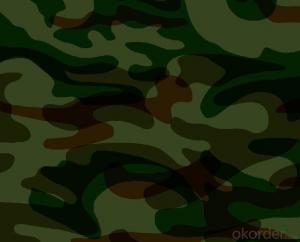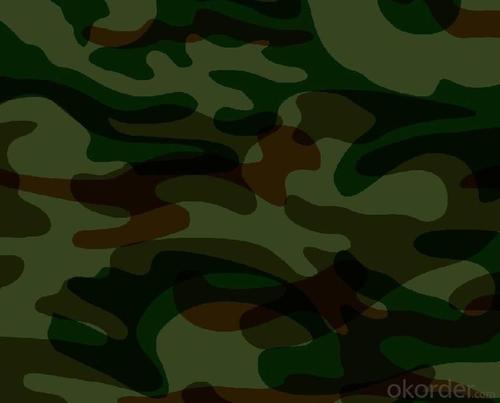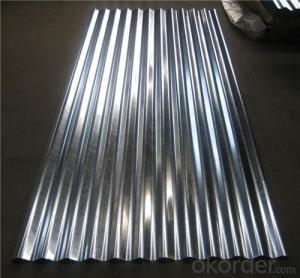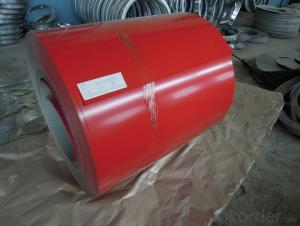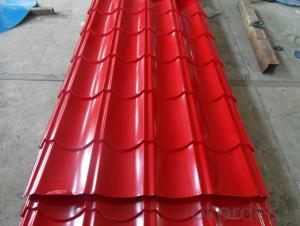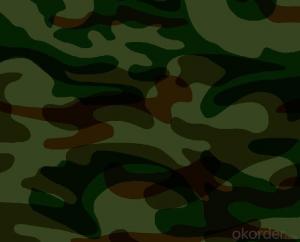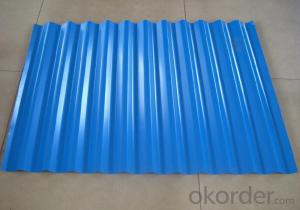Pre-Painted Galvanized/Aluzinc Steel Coil DX51D with Our Best Quality
- Loading Port:
- China main port
- Payment Terms:
- TT OR LC
- Min Order Qty:
- 50 m.t.
- Supply Capability:
- 10000 m.t./month
OKorder Service Pledge
OKorder Financial Service
You Might Also Like
1. Pre-Painted Galvanized/Aluzinc Steel Coil DX51D with Our Best Quality
With GI as base material, after pretreatment (degrease and chemical treatment ) and liquid dope with several layers of color, then after firing and cooling, finally the plate steel is called pre-painted galvanized (aluzinc) steel. Pre-painted galvanized steel is good capable of decoration, molding, corrosion resistance. It generally displays superior workability, durability and weather resistance.
2.Main Features of Pre-Painted Galvanized/Aluzinc Steel Coil DX51D :
• Excellent process capability
• Smooth and flat surface
• Workability, durability
• Excellent heat resistance performance
3.The Steel Coil Images:
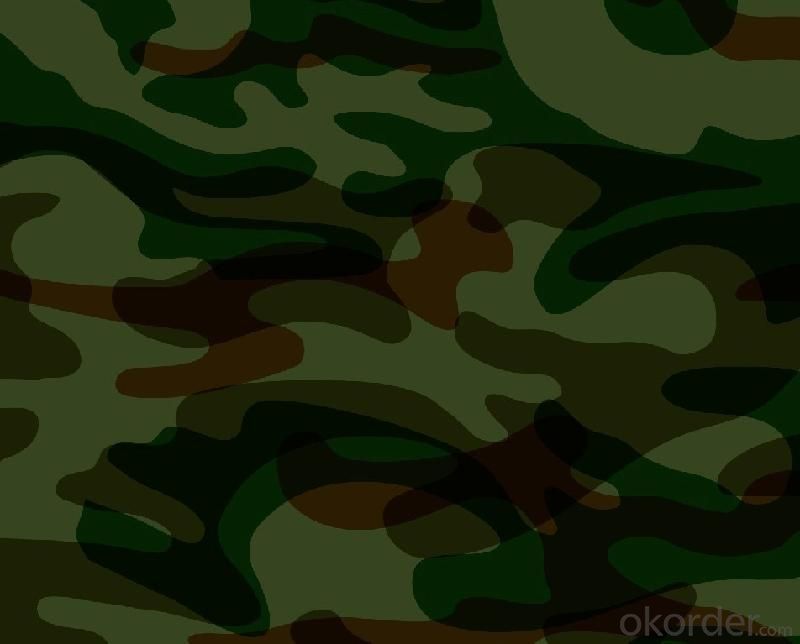
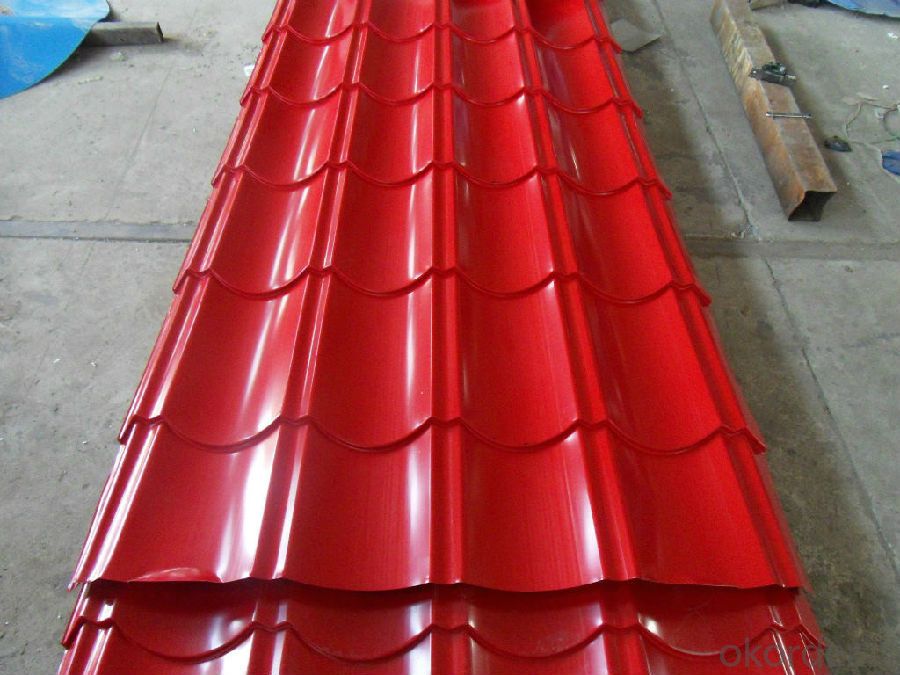
4.Pre-Painted Galvanized/Aluzinc Steel Coil Specification:
Standard: AISI, ASTM, BS, DIN, GB, JIS
Grade: DX51D, DX52D
Thickness: 0.17-2.0mm
Brand Name: KMRLON
Model Number: coil
Type: Steel Coil
Technique: Cold Rolled
Surface Treatment: Coated
Application: Boiler Plate
Special Use: High-strength Steel Plate
Width: 20-1250mm
Length: customized
commoidty: pre-painted galvanized steel coil
Thickness: 0.13-4.0mm
width: 20-1250mm
zinc coating: 40-180g/m2
printing thickness: top side: 20+/-5 microns, back side: 5-7 microns
color: all RAL color
surface treatment: color coated
coil weight: 4-7 tons
coil ID: 508/610mm
5.FAQ of Pre-Painted Galvanized/Aluzinc Steel Coil
1. What’s the application of this product?
Roof, roof structure, surface sheet of balcony, frame of window, etc.
2. What’s the brand of the paint?
We use the best brand of all of the word—AKZO.
- Q: How are steel coils used in the production of storage racks?
- Steel coils are used in the production of storage racks as they are cut and formed into different shapes and sizes to create the structural components of the racks. These coils are typically made from high-quality steel, providing strength and durability to the racks, making them suitable for storing heavy items.
- Q: How are steel coils protected during transportation?
- Steel coils are kept safe and free from harm during transport through a range of precautionary measures. One widely used technique involves utilizing top-notch packaging materials like heavy-duty plastic wrap or waterproof paper. These materials form a protective shield against external factors such as moisture, dust, and debris. Moreover, steel coils are typically placed on wooden pallets or skids to elevate them from the ground and prevent direct contact with surfaces that may cause scratches or dents. To provide further protection, the coils are securely fastened to the pallets using strong, corrosion-resistant metal strapping or bands. This ensures that the coils remain in position and do not shift or move during transport, significantly reducing the risk of damage. Additionally, specialized equipment like coil cradles, coil racks, or coil bunks are used to load and secure the steel coils onto flatbed trailers or shipping containers. These devices are specifically designed to firmly hold the coils in place and evenly distribute their weight, preventing any stress or strain during transit. Apart from physical safeguards, steel coils may also undergo various surface treatments before being transported to prevent corrosion. This may involve applying a protective coating or oiling the coils to create a barrier between the steel and the surrounding environment. This process is particularly important when the coils are exposed to adverse weather conditions or long shipping durations, as it helps to prevent rust or other forms of corrosion. In conclusion, a combination of appropriate packaging, secure fastening, and proper loading techniques are employed to ensure the safety of steel coils during transportation. These measures guarantee that the coils arrive at their destination without significant damage.
- Q: Are steel coils used in furniture manufacturing?
- Yes, steel coils are commonly used in furniture manufacturing for various purposes such as providing support and stability to seating structures, enhancing durability, and ensuring proper weight distribution.
- Q: I'm trying to buy a Survival,tactical knife but don't know what steel is better
- You pay your money and take your choice. High carbon non-stainless steels are easier to sharpen and hold their cutting edge longer than stainless. Stainless steels generally are rust resistant, not rust-proof. However, there are more than 40 types of steels being used for knife-making. Probably the best in the stainless range are the American Hi-performance Stainless Steels. These are graded as; CPM440V, CPM420V, CPM10V, CPM3V and 154-CM. Incidentally, nearly all knife steels contain carbon in varying amounts. The only one that I am aware of that does not contain any carbon is Sandvic12C-27.
- Q: What is the weight of a typical steel coil?
- The weight of a typical steel coil can vary significantly depending on its size, thickness, and type of steel used. However, a typical steel coil can range anywhere from a few hundred kilograms to several tonnes in weight.
- Q: What are the different methods of leveling steel coils?
- There are several methods used to level steel coils, including roller leveling, stretcher leveling, and tension leveling. Roller leveling involves passing the coil through a series of rollers that gradually bend and flatten the steel to remove any curvature or unevenness. Stretcher leveling uses hydraulic or mechanical forces to stretch the steel in order to eliminate any residual stress and improve flatness. Tension leveling applies tension to the steel coil while it is being passed through a series of rolls, which helps to remove any waviness or shape defects. These methods are employed depending on the specific requirements and desired flatness of the steel coils.
- Q: What are the common methods of painting or coating steel coils?
- One common method of painting or coating steel coils is through the process of coil coating. In coil coating, the steel coils are first cleaned and pre-treated to remove any contaminants and improve adhesion. Then, a primer or a base coat is applied to the coils to provide a foundation for the final coating. This primer helps in protecting the steel from corrosion and improves the overall durability of the coating. After the primer is applied, the steel coils pass through a series of rollers where the topcoat is applied. The topcoat can be a variety of materials such as polyester, polyurethane, or fluoropolymer, depending on the desired properties of the final coating. These topcoats provide the desired color, gloss, and protection against weathering, chemical exposure, and UV radiation. Another common method of painting or coating steel coils is through the process of electrostatic spraying. In this method, a paint or coating material is atomized into fine droplets and then charged with an electrical charge. The steel coils, which are grounded, attract the charged droplets, resulting in an even and controlled application of the paint or coating material. Powder coating is yet another method used for painting or coating steel coils. In this process, a dry powder is electrostatically charged and sprayed onto the steel coils. The charged powder adheres to the surface of the steel due to electrostatic attraction. The coated steel coils are then heated, causing the powder to melt and form a continuous film, providing a durable and resistant coating. Overall, these methods of painting or coating steel coils offer a wide range of options in terms of color, finish, and performance characteristics. The choice of method depends on factors such as the desired appearance, level of protection needed, and the specific requirements of the intended application.
- Q: Are steel coils affected by temperature changes?
- Yes, steel coils are indeed affected by temperature changes. Steel is known to expand and contract with temperature fluctuations. When exposed to high temperatures, steel coils expand, and when subjected to low temperatures, they contract. These thermal expansions and contractions can cause changes in the dimensions and shape of the steel coils, which can potentially affect their performance and functionality.
- Q: What are the different coil surface finishes?
- There are several different coil surface finishes, including mill finish, brushed finish, embossed finish, and coated finish.
- Q: I'm in the process of buying a new car, and wondering if there are more benefits from Aluminum tire rims over Steel. Aluminum wheels cost more, but you'd think that steel would last longer. Are Aluminum wheels just for looks?
- Steel rims are stronger and will endure more abuse and curb scrapes. Aluminum rims are lighter and give the car a better ride due to less unsprung weight, but they require more maintenance and are easier damaged. I guess the final decision is up to you.
Send your message to us
Pre-Painted Galvanized/Aluzinc Steel Coil DX51D with Our Best Quality
- Loading Port:
- China main port
- Payment Terms:
- TT OR LC
- Min Order Qty:
- 50 m.t.
- Supply Capability:
- 10000 m.t./month
OKorder Service Pledge
OKorder Financial Service
Similar products
Hot products
Hot Searches
Related keywords
